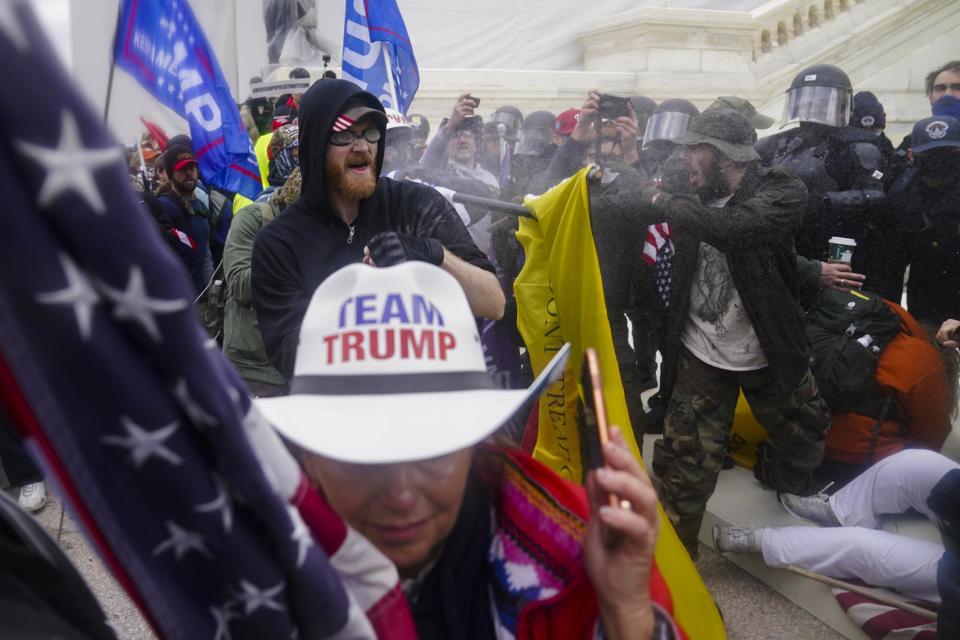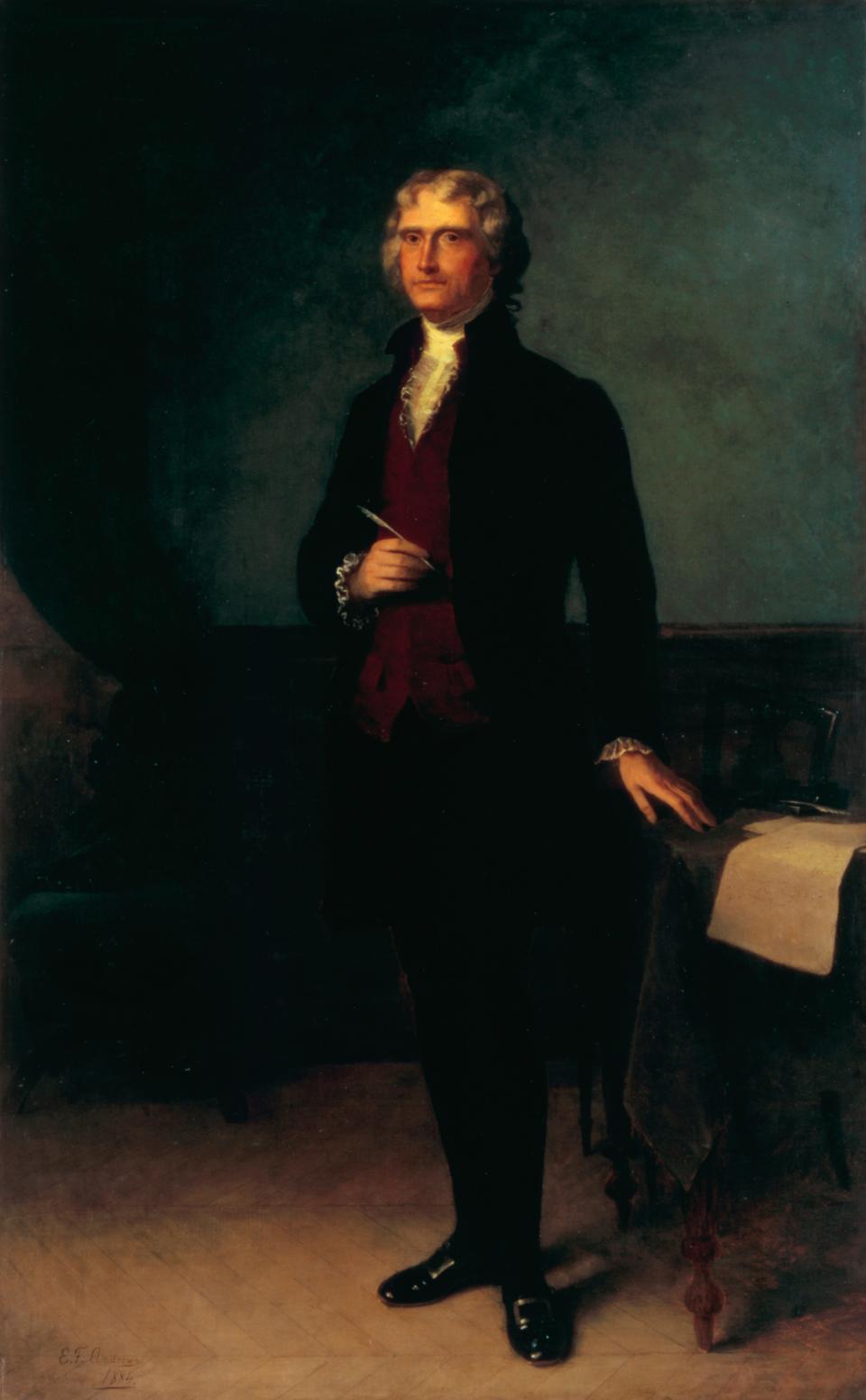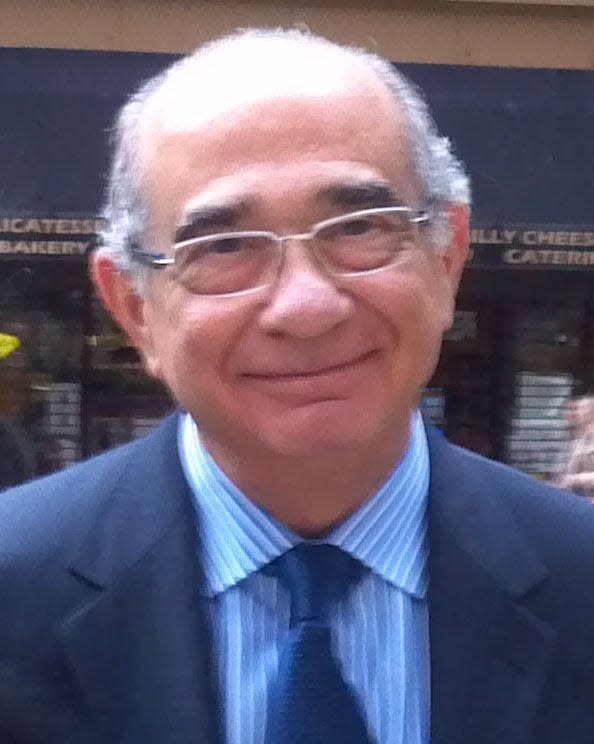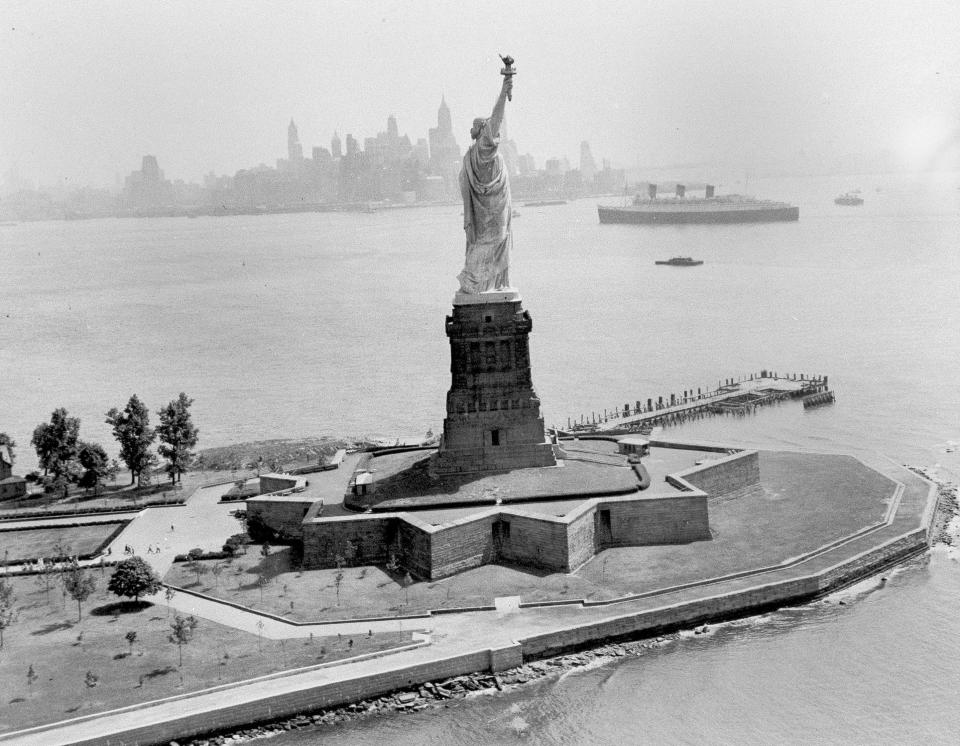Opinion: America's rich diversity will survive bad boy white supremacy
- Oops!Something went wrong.Please try again later.
- Oops!Something went wrong.Please try again later.
In all the eloquence and enduring power of the Declaration of Independence, five words stand out: All men are created equal.
The words are like hinges on a great door — one that provides access to the limitless future of humankind. Like later words in the preamble to the Constitution — “to form a more perfect union” — these were prescient expressions of revolutionary days that signaled even stormier decades to come.
Today, people fret about the status of our democracy.
But over the course of almost 250 years, the nation has endured bloody challenges and lurched ever forward toward that more perfect union through the Revolution, the Civil War, the Great Society, and more recently, the feeble gasping of the bad boy white supremacists.

Mike DeWine: From Holocaust to Nazis at Columbus drag brunch, history teaches, can repeat
All men are created equal
The paradox of Thomas Jefferson, the slave owner who authored the phrase about human equality, stemmed from his family’s and most of his contemporaries’ approval of slavery in contrast to his support for the emerging enlightenment thinking of the day.
So, he could coin the phrase that all men are created equal and accept the deletion of antislavery language in the early draft of the Declaration.
Emeritus Professor John Brooke, the former head of the Ohio State University Center for Historical Research, notes: “All logic would say that Jefferson would never have said that all men are created equal, but he was ‘corrupted’ by reading books on the enlightenment.”

He staunchly supported the end of monarchical rule in favor of an evolving society rooted in ideals and unshackled to bloodlines.
Clearly, Brooke says, the Founding Fathers understood that the Constitution would require amendments as the nation grew and confronted new and ongoing challenges. Initially, most likely for political reasons, however, they left the issue of slavery unresolved.
Eighty-seven years later, another cataclysmic event roiled the young, evolving nation.
Unequal
At Gettysburg, President Lincoln recognized the tumultuousness of the Civil War. He declared “this nation, under God, shall have a new birth of freedom....”

In his vision, Lincoln foresaw the survivability of the union as the nation lurched forward through the bloody conflagration and the embrace of Jefferson’s equality of men and the pursuit of perfection.
The war brought with it the end of slavery and the birth of Reconstruction. But Jim Crow laws adopted in southern states thwarted the aim of Reconstruction by marginalizing the newly freed slaves. These laws legalized segregation and made it difficult if not impossible for Blacks to vote, get educated, and hold jobs.
More: Reconstruction is often overlooked. A Smithsonian Black history exhibit says it's an ongoing process
Gift of liberty

It took almost another century before the Supreme Court ruled that the segregation of public schools was unconstitutional. And a decade later, President Lyndon B. Johnson, using all the skills of a master politician, won approval for the Civil Rights Act and the Voting Rights Act.
Along the way, the French gifted America the Statue of Liberty and poet Emma Lazarus penned a prescient sentiment at the base:
“Give me your tired, your poor,
Your huddled masses yearning to breathe free,
The wretched refuse of your teeming shore.
Send these, the homeless, temptest-tost to me,
I lift my lamp beside the golden door!”
And they came in droves, often with little more than fear and hope. Across the vastness of the Atlantic, then the Pacific Ocean, the “temptest-tost” masses arrived. Eventually, they walked to the border from Mexico.
The influx of immigrants has helped to grow the economy and the population, now more than 340 million.
The mix of cultures is everywhere.
About 14% of the U.S. population is foreign-born; more than 45 million immigrants live in this nation.
We enjoy cuisine from Arabic and Greek to Korean and Chinese, Brazilian and Indian. And pizza and tacos, of course, are available everywhere. Lecturers from the Philippines, music from European masters and southern jazz artists, displays of art from Africa and the Far East also enrich the cultural blend.
But change is always painful.
We continue to wrestle with problems of racism fueled by fear, hatred, and anger. Some Black people have made significant progress in diverse areas of American life, including business, government, academia, and politics, as well as sports, entertainment, and the arts. But many Asians and Black and brown people continue to confront discrimination in housing, education and employment, not to mention the bogus blame for the pandemic.
The culture of the nation — longing for the great door to swing open to a multicultural and multiethnic society, a truly unique, pluralistic society — advances in fits and starts.
But inexorably we progress. American democracy is not faltering, as some suggest. It is dealing with the paradoxes confronting a nation of diverse citizens.
Racism and bigotry were neither invented here nor unique to America. They are a cancer on all of humanity. A cure remains elusive, and effective treatments are difficult to come by.
The multitude of immigrant Americans yearning to breathe free are testament to our benevolent leadership of the world, the inherent equality of all humans and the commitment to keep striving for a more perfect union.
William DiMascio is a former AP Bureau chief for the state of Ohio, executive editor of the Cleveland Press and communications consultant. He is now retired. Contact the Free Press opinion page at freep.com/letters.
This article originally appeared on Detroit Free Press: Opinion: America's rich diversity will survive bad boy white supremacy

